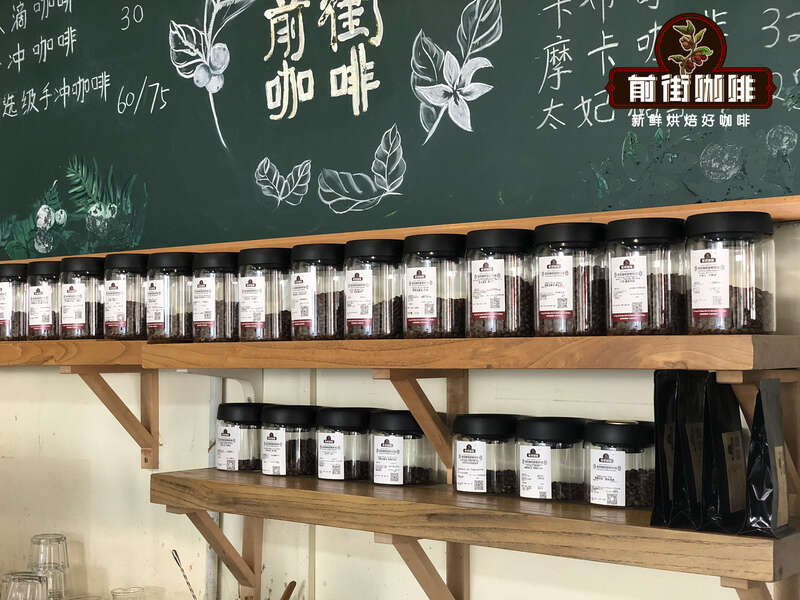The current situation of Hawaiian Kona coffee cultivation, why is Hawaiian Kona coffee so expensive?

For information, please follow the coffee workshop (Wechat official account cafe_style)
The trade-wind-blown Hawaiian Islands is the only coffee-producing state in the United States. it is a perfect coffee-growing area, and the Kona coffee beans are internationally famous as one of the best coffee in the world. The volcanic soil and tropical climate, coupled with slight humidity and regular afternoon showers, create an ideal planting environment that can only appear in idyllic poetry, and add some meticulous but unique flavor characteristics to the coffee beans here.
Kona coffee is grown on the slopes of Mauna Roa volcano on the southwest coast of Hawaii. In terms of flavor, Kona beans are closer to Central American coffee than Indonesian coffee. Its average quality is very high, carefully handled, medium texture, good sour taste, very rich flavor, and fresh Kona coffee is extremely fragrant. If you think your coffee is too thick, African coffee is too sour, Central and South American coffee is too rough, then "Kona" may be suitable for you. Kona is like a girl in the Hawaiian sunshine breeze, fresh and natural.
Kona coffee beans are average and neat in shape, with strong sour and sweet taste, moist and smooth taste. Because they grow on volcanoes and have high-density artificial farming, each bean can be said to be a spoiled "lady" with beautiful, plump and baby-like skin.
Although Hawaii is often affected by tornadoes, the climatic conditions are very suitable for the coffee industry. There is plenty of rain and sunshine, and there is no worry of frost. In addition, there is a strange natural phenomenon called "free shade". On most days, around 2 o'clock in the afternoon, white clouds appear in the sky, providing the necessary shade for the coffee trees. In fact, it is such superior natural conditions that make Arabica coffee in the Kona region produce more coffee than any other plantation in the world, and always maintain high quality, unique growth and climate environment to create a stronger coffee flavor.
All the islands of Hawaii have coffee trees for commercial use. The Big Island has the largest number of coffee farms, with about 650 farms, but these coffee farms are relatively small, with a total of less than 2000 acres. There are only 25 coffee farms operating on the islands of Maui, Molokai, Oahu and Kauai, but the area of coffee farms in these places is much larger than that on the big island. The total output is also more than three times higher than that of the Big Island Coffee Garden. Surprisingly, Kauai Island has the largest coffee-growing area of any island, with more than 4000 acres, but all are managed by the same operator; Molokai Island has only 550 acres of coffee, and Maui and Oahu are even less. Most Hawaiian coffee farmers still pick fresh coffee cherries for sale today, but in recent years more and more people are committed to adding value to their coffee bean products, processing, drying, grinding and roasting their own coffee beans.
But to the regret of coffee fans, only about 1400 hectares of coffee is produced. And because of Hawaii's high income and a large number of tourists, Kona coffee is so expensive that it is even sold as "kona blend" (no more than 5 per cent of Kona beans). Neighboring islands such as maui, kauai and molokai have also begun to grow coffee commercially.
Editing
Important Notice :
前街咖啡 FrontStreet Coffee has moved to new addredd:
FrontStreet Coffee Address: 315,Donghua East Road,GuangZhou
Tel:020 38364473
- Prev

Description of Taste and Flavor of Brazilian Coffee introduction to the grading system of Coffee varieties in Brazil
As we all know, Brazil is not only a football kingdom, but also a country surrounded by palm trees and coffee. Some people call Brazil the giant and monarch of the coffee industry. Brazil produces the highest amount of coffee in the world.
- Next

The development and present situation of coffee in Taiwan, the most famous coffee in Taiwan is Gukeng coffee.
For information, please pay attention to the coffee workshop (Wechat official account cafe_style). Taiwan's coffee culture is deeply influenced by Japan due to historical reasons. now, ground coffee has become very common, and fine coffee and hand-made coffee have gradually become the mainstream of fashion. There were only a handful of Taiwan cafes in 1930 and 1940s, but several well-known cafes such as Polly Road, Shanshui Pavilion and Tianma teahouse
Related
- Does Rose Summer choose Blue, Green or Red? Detailed explanation of Rose Summer Coffee plots and Classification in Panamanian Jade Manor
- What is the difference between the origin, producing area, processing plant, cooperative and manor of coffee beans?
- How fine does the espresso powder fit? how to grind the espresso?
- Sca coffee roasting degree color card coffee roasting degree 8 roasting color values what do you mean?
- The practice of lattes: how to make lattes at home
- Introduction to Indonesian Fine Coffee beans-- Java Coffee producing area of Indonesian Arabica Coffee
- How much will the flavor of light and medium roasted rose summer be expressed? What baking level is rose summer suitable for?
- Introduction to the characteristics of washing, sun-drying or wet-planing coffee commonly used in Mantenin, Indonesia
- Price characteristics of Arabica Coffee Bean Starbucks introduction to Manning Coffee Bean Taste producing area Variety Manor
- What is the authentic Yega flavor? What are the flavor characteristics of the really excellent Yejasuffi coffee beans?

